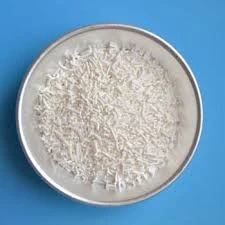
Exploring the Impact of Flavor Enhancers on Culinary Experiences and Food Enjoyment
Food Flavor Enhancers Unlocking the Secrets of Taste
Food is an essential part of our lives, not just for sustenance but also for its significant role in our culture, social interaction, and enjoyment. One of the primary factors that can make or break a meal is flavor. While cooking techniques and fresh ingredients are crucial, many culinary professionals and home cooks alike often turn to food flavor enhancers to elevate their dishes. This article delves into the world of food flavor enhancers—what they are, their types, and how they contribute to enhancing food taste.
Understanding Flavor Enhancers
Food flavor enhancers are substances that are added to food to improve its taste without imparting a distinct flavor of their own. They work by intensifying the existing flavors in a dish, making them more pronounced and enjoyable. Flavor enhancers come in various forms, including natural and artificial compounds, and they can influence taste perception in several ways.
Types of Flavor Enhancers
1. Monosodium Glutamate (MSG) One of the most well-known flavor enhancers, MSG is a sodium salt of glutamic acid, an amino acid that naturally occurs in many foods. MSG is often used in savory dishes to amplify umami, the fifth basic taste alongside sweet, sour, bitter, and salty. Despite some controversies surrounding its safety, scientific consensus has deemed MSG safe for consumption when used appropriately.
2. Yeast Extracts These extracts are derived from baker's or brewer's yeast and are rich in amino acids, particularly glutamate. They provide a savory flavor and are popularly used in soups, sauces, and snack foods. Yeast extracts can enhance the depth of flavor in a dish while adding nutritional benefits, such as B vitamins.
3. Natural Flavor Compounds These include essential oils, spices, and concentrated flavor extracts derived from fruits, vegetables, and herbs. Natural flavor compounds can enrich the taste profile of foods without the use of synthetic additives. For instance, vanilla extract can enhance dessert flavors, while garlic powder can deepen the taste of savory dishes.
food flavour enhancer

4. Salt While salt is primarily known for its ability to enhance flavors by mitigating bitterness and balancing sweetness, it also increases the perception of umami. It's a fundamental ingredient in cooking, and its versatility allows it to enhance various dishes, from meats to vegetables.
5. Sweeteners Sugar, honey, and artificial sweeteners can enhance flavors in both savory and sweet dishes. Sweetness can intensify other flavors, making it a useful tool in both cooking and baking. For example, adding a touch of sugar to tomato sauce can balance acidity and bring out the natural sweetness of the tomatoes.
Impact on Culinary Practices
The use of flavor enhancers has transformed culinary practices, particularly in the food industry. Manufacturers employ various flavor enhancers to create consistent taste experiences across products, ensuring customer satisfaction. This practice is particularly common in processed foods, snacks, and fast food, where flavor consistency is key.
In home cooking, the thoughtful use of flavor enhancers can elevate the quality of dishes, making them more appealing and satisfying. They can be especially beneficial for individuals who may be experiencing diminished taste sensations due to age or health conditions.
Conclusion
Food flavor enhancers play an integral role in our culinary landscape, enhancing the flavors we experience in our favorite dishes. Their judicious use can transform the ordinary into the extraordinary, making meals more enjoyable and flavorful. Whether you rely on natural extracts, yeast-based products, or traditional seasoning methods, understanding how to use flavor enhancers can elevate your cooking skills and enrich your dining experiences. As we continue to explore the intricate world of flavors, food flavor enhancers remain a powerful tool in the art of delicious cooking.
-
Buy High-Quality Trichloroisocyanuric Acid for Sale | TCCA 90% SupplierNewsAug.30,2025
-
Pure Sodium Dichloroisocyanurate Dihydrate | Powerful DisinfectantNewsAug.29,2025
-
Industrial Chemicals: Quality & Purity for Every IndustryNewsAug.28,2025
-
Nitrile Rubber Honoring Strict Production StandardsNewsAug.22,2025
-
Aspartame Ingredients Honoring Food Safety ValuesNewsAug.22,2025
-
Fertilizer for Balanced Plant NutritionNewsAug.22,2025
-
Cyanide Gold Processing with High Purity AdditivesNewsAug.22,2025
Hebei Tenger Chemical Technology Co., Ltd. focuses on the chemical industry and is committed to the export service of chemical raw materials.
-

view more DiethanolisopropanolamineIn the ever-growing field of chemical solutions, diethanolisopropanolamine (DEIPA) stands out as a versatile and important compound. Due to its unique chemical structure and properties, DEIPA is of interest to various industries including construction, personal care, and agriculture. -

view more TriisopropanolamineTriisopropanolamine (TIPA) alkanol amine substance, is a kind of alcohol amine compound with amino and alcohol hydroxyl, and because of its molecules contains both amino and hydroxyl. -

view more Tetramethyl Thiuram DisulfideTetramethyl thiuram disulfide, also known as TMTD, is a white to light-yellow powder with a distinct sulfur-like odor. It is soluble in organic solvents such as benzene, acetone, and ethyl acetate, making it highly versatile for use in different formulations. TMTD is known for its excellent vulcanization acceleration properties, which makes it a key ingredient in the production of rubber products. Additionally, it acts as an effective fungicide and bactericide, making it valuable in agricultural applications. Its high purity and stability ensure consistent performance, making it a preferred choice for manufacturers across various industries.





